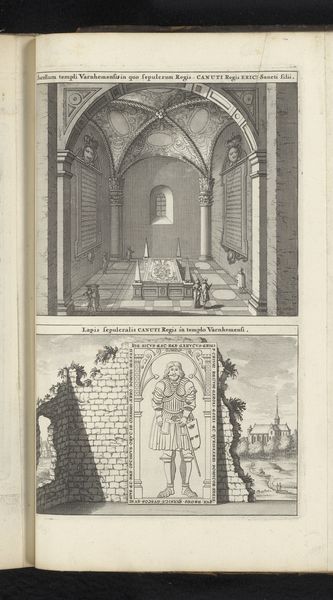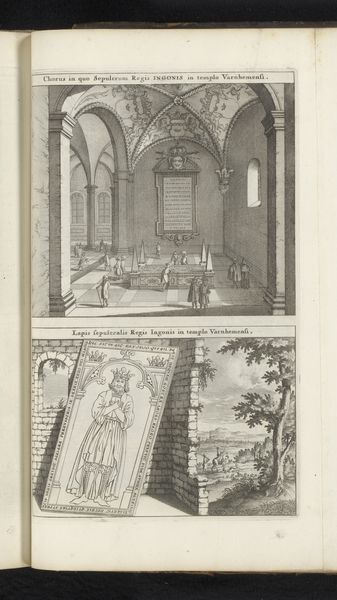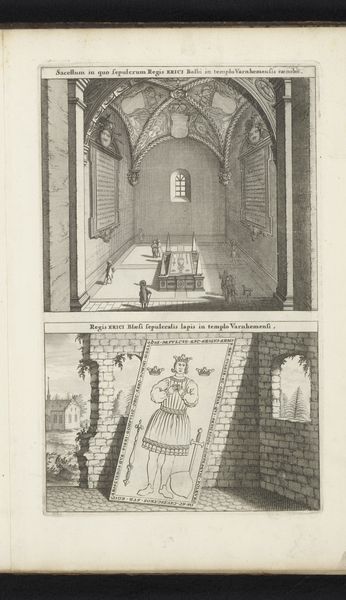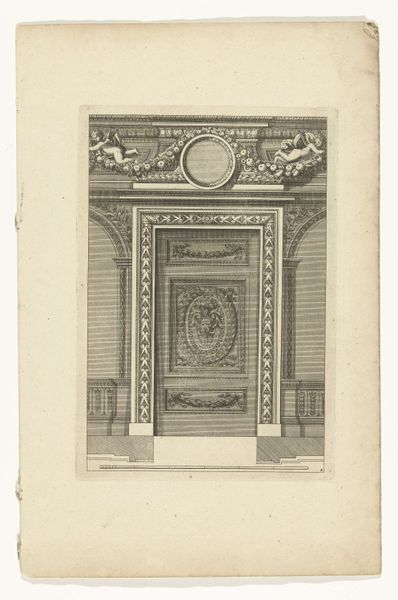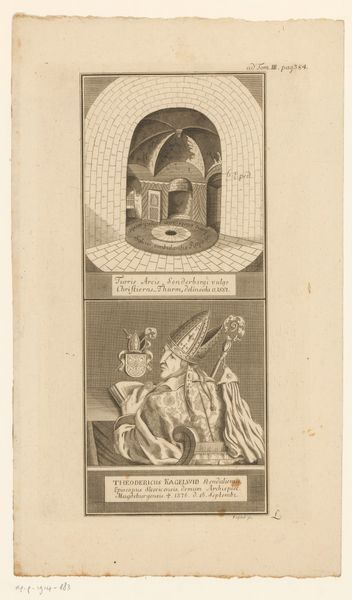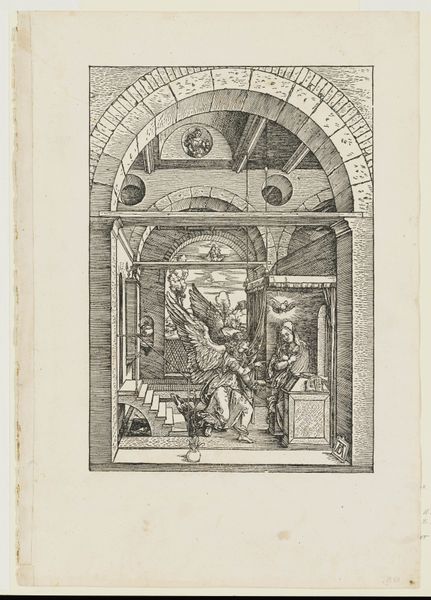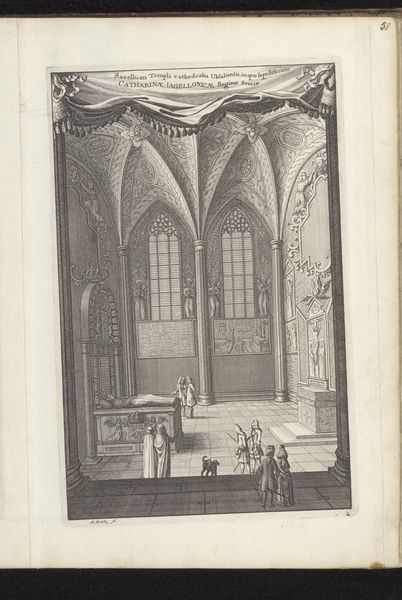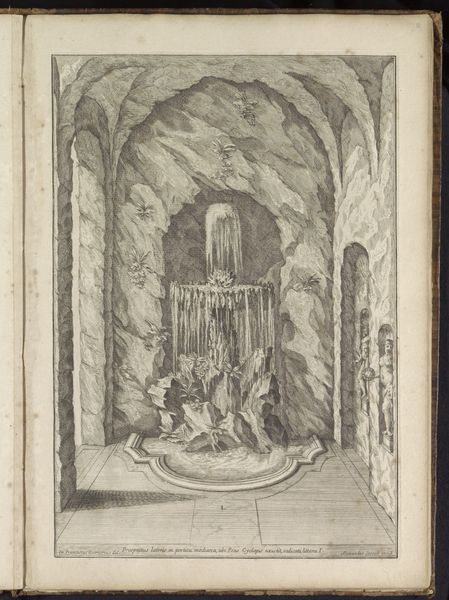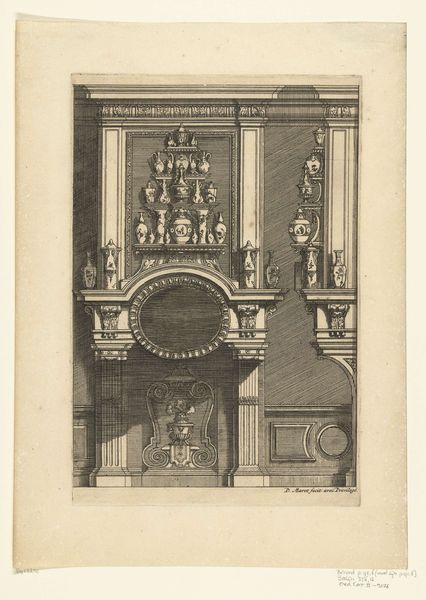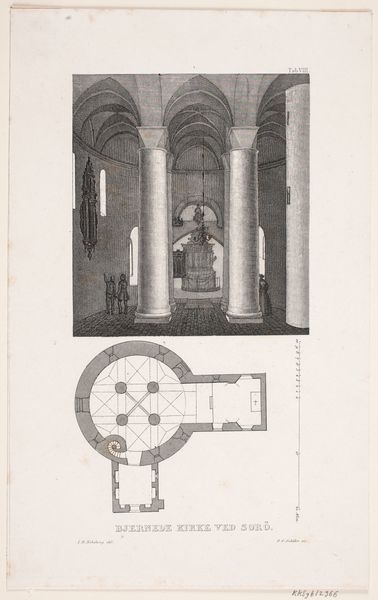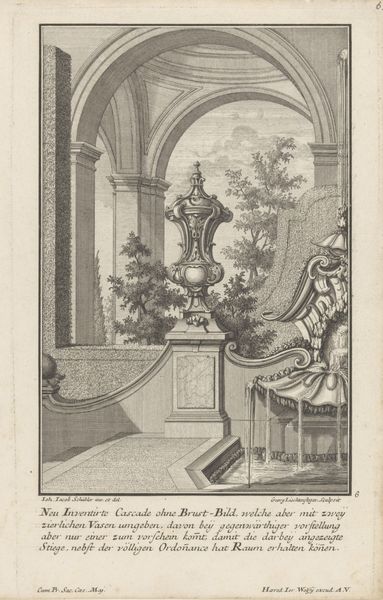
Kapel en grafsteen van Erik X van Zweden in de kloosterkerk van Varnhem 1692
0:00
0:00
drawing, print, ink, engraving
#
drawing
#
medieval
#
pen drawing
# print
#
ink
#
history-painting
#
engraving
Dimensions: height 263 mm, width 164 mm
Copyright: Rijks Museum: Open Domain
Curator: Let's discuss this engraving, a 1692 print by Willem Swidde entitled "Chapel and gravestone of Erik X of Sweden in the monastery church of Varnhem," currently held in the Rijksmuseum. What strikes you initially about its composition? Editor: The stark contrast of architectural interior versus exterior and grave marker is intriguing. There’s an element of constructed history—of memorializing both the space and the individual—but rendered through what appears to be fairly standard printmaking practice. The quality of line emphasizes process over illusion, really. Curator: Precisely. The upper scene offers a structured representation of the chapel, note the orthogonals converging to a single vanishing point. The composition is divided horizontally with architectural elements carefully placed for balance, leading the eye systematically. But how do we read it, formally, considering this rendering of a constructed history? Editor: To that point—and knowing its age—I wonder about the relationship between labor and the supposed ‘objectivity’ of this historical representation. Copper engraving was a relatively painstaking, manual method for reproduction and dissemination, often outsourced. It belies a desire for widespread viewership that I would not associate with ‘precious’ art. Curator: The details are exquisite—the vaulted ceiling in the chapel, the carefully inscribed epitaph, and even the landscape background next to the gravestone – yet they are all conveyed through what some may see as quite pedestrian materials. Do these careful artistic decisions then fail the objective reality to which they refer? Editor: On the contrary! By exploring these very means of material reproduction and how labor is assigned to various steps of it – from the initial design to carving the plate – a history itself is materialized and handed down. These techniques provide historical context, and inform us how they were constructed. Curator: I appreciate your emphasis on these techniques and cultural factors to uncover meaning and historical contexts. It does expand the dimensions to appreciate such artwork and reminds us of the role of mediation. Editor: Agreed, it encourages a more grounded awareness of value. Thank you, this piece brings material concerns to the fore that make us reconsider traditional aesthetic hierarchies.
Comments
No comments
Be the first to comment and join the conversation on the ultimate creative platform.
